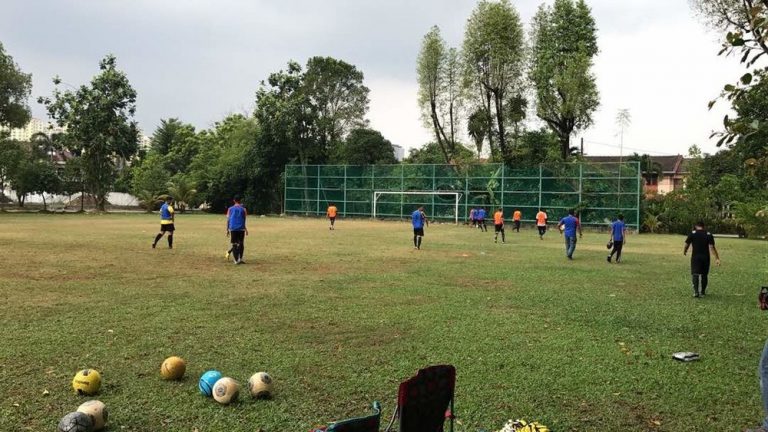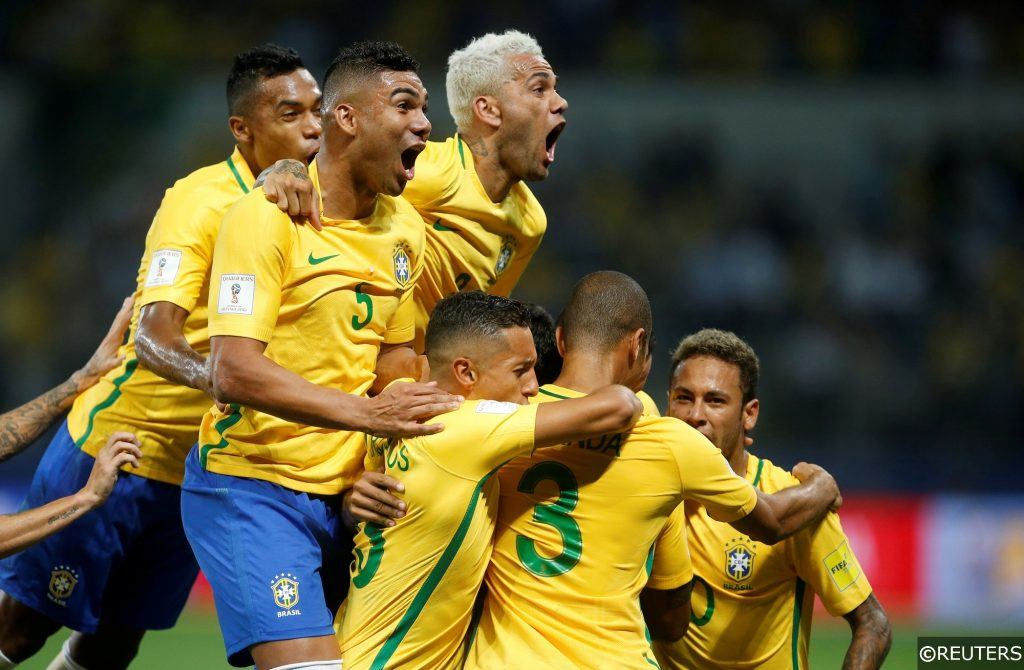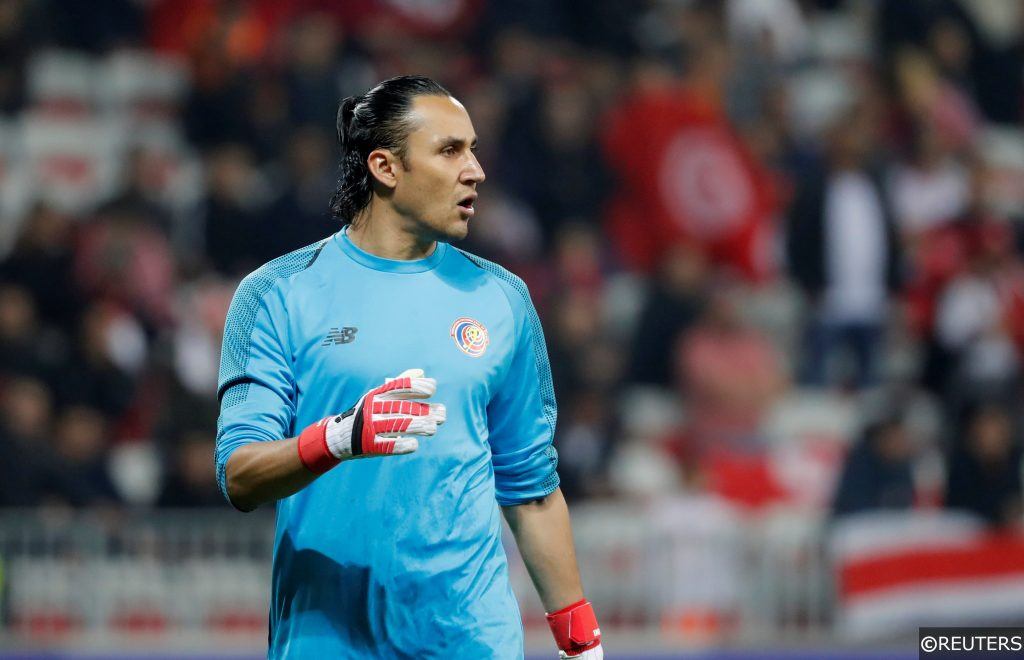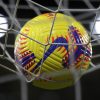
Born in the south east of Ireland, Simon put his life-long love of football to good use when he started a successful independent blog in 2010. That opened up an alternative route to a career in journalism, and having had work published across a number of sites and publications, Simon joined the staff at Spotlight Sports Group in 2018.
(Feature Image Credit: By Iklanmaju1988 (i made on my own) [GFDL (http://www.gnu.org/copyleft/fdl.html) or CC BY-SA 4.0 (https://creativecommons.org/licenses/by-sa/4.0)], via Wikimedia Commons)
In the latest entry in our Academy Analysis multi-part feature, we take a closer look at the make-up of the squads in World Cup Group E: Brazil, Serbia, Costa Rica and Switzerland. Through our analysis, we will try to establish which clubs produce the most international talent for each respective country.
Read Parts 1, 2, 3 and 4 first using the links below:
Part 2 of our Academy Analysis, focusing on the teams in Group B: Iran, Morocco, Portugal and Spain.
BRAZIL

(Name of player – Name of club that produced them)
Alisson – Internacional
Cassio – Gremio
Ederson – Ribeirao
Danilo – Atletico Mineiro
Fagner – Corinthians
Filipe Luis – Figueirense
Geromel – Portuguesa
Marcelo – Fluminense
Marquinhos – Corinthians
Miranda – Cortiba
Thiago Silva – Fluminense
Casemiro – Sao Paolo
Coutinho – Vasco da Gama
Fernandinho – Atletico Paranaense
Fred- Internacional
Paulinho – Pao de Acucar
Renato Agusto – Flamengo
Willian – Corinthians
Douglas Costa – Gremio
Firmino – Figueirense
Gabriel Jesus – Palmeiras
Neymar – Santos
Taison – Internacional
More:
Sixteen different Brazilian academies can claim to have a hand in the engineering of Tite’s World Cup 2018 squad. The Canarinho selection is truly a national one, in that the spread of regional representation is wide and varied. Porto Alegre outfit, Internacional sit alongside Sao Paulo based Corinthians as the most productive provider of current senior internationals with 3 players from each club’s academy in Brazil’s ranks for Russia.
As one of the country’s richest clubs, Corinthians have the financial clout to sign players that others can’t. However, their dedication to producing their own players has never slipped – in fact, the number of home-grown footballers in their current squad is in double figures.
Corinthians train their stars of tomorrow at their impressive CT Joaquim Grava complex that was built as recently as 2010, close to the Tiete River. The facility contains a 32-bedroom hotel, a technology annex, a 100-seat media room as well as an internet café, 60-seat restaurant and an auditorium.
The most cutting-edge area of the complex is the club’s in-house bio-mechanics area, called the Laboratório Corinthians-R9. The lab was constructed with injury-prevention in mind, an it contains machines for measuring the contact force, velocity and reaction of the joints during running, jumping and kicking exercises.
The Numbers:
Internacional, Corinthians – 3
Gremio, Fluminense, Figueirense- 2
Various – 1
World Cup 2018: Analysing Brazil’s potential starting lineup
SERBIA
(Name of player – Name of club that produced them)
Vladimir Stojkovic – Red Star Belgrade
Predrag Rajkovic – Hadjuk Veljko/Jagodina
Marko Dmitrovic – Red Star Belgrade
Branislav Ivanovic – Srem
Aleksandar Kolarov – Red Star Belgrade
Antonio Rukavina – Bezanija
Duško Tošic – Proleter Zrenjanin
Uroš Spajic – Red Star Belgrade
Miloš Veljkovic – FC Basel/Tottenham Hotspur
Nikola Milenkovic – Partizan Belgrade
Milan Rodic – OFK Belgrade
Dušan Tadic – Vojvodina
Nemanja Matic – Vrelo/Red Star Belgrade
Adem Ljajic – Partizan Belgrade
Luka Milivojevic – Radnicki Kragujevac
Filip Kostic – Radnicki 1923
Andrija Živkovic – Partizan Belgrade
Marko Grujic – Red Star Belgrade
Sergej Milinkovic-Savic – Vojvodina
Nemanja Radonjic – Radnicki NS
Aleksandar Mitrovic – Partizan Belgrade
Aleksandar Prijovic – St. Gallen
Luka Jovic – Red Star Belgrade
More:
48% of the Serbian World Cup squad can trace their origins back to one of the country’s two biggest football institutions, Partisan and Red Star. Both Balkan giants are based in the capital Belgrade – caste as neighbours and enemies they are locked in a perpetual battle on the pitch for domestic titles. “The Eternal Derby” has been contested with unrelenting fury since 1947, with Red Star winning the most recent contest in mid-April.
Off the pitch, the clubs do battle from Krnjača to Kotež and beyond for the most prodigious young footballers in the locale. Red Star can count 7 Serbian squad members among their former graduates and that septet were schooled on the same turf as club and international legends like Darko Pančev, Siniša Mihajlović, Dejan Savićević, Robert Prosinečki and Vladimir Jugović.
Red Star academy students are plentiful at just about every level of Serbian international football. 4 of their youngsters were in Serbia’s 2015 U20 FIFA World Cup winning squad. Incidentally, 5 of those title winners will travel to Russia as part of Mladen Krstajić’s selection. Predrag Rajkovic, Miloš Veljkovic, Andrija Živkovic, Marko Grujic and Sergej Milinkovic-Savic lifted the U20 World Cup trophy in New Zealand 3 years ago.
The Numbers:
Red Star Belgrade – 7
Partizan Belgrade – 4
Various – 1
Read More: World Cup Group E Analysis: Plain Sailing for Brazil?
COSTA RICA

(Name of player – Name of club that produced them)
Keylor Navas – Deportivo Saprissa
Patrick Pemberton – Alajeulense
Leonel Moreira – Herediano
Giancarlo González – Alajeulense
Johnny Acosta – Deportivo Saprissa
Cristian Gamboa – Municipal Liberia
Bryan Oviedo – Deportivo Saprissa
Óscar Duarte – Deportivo Saprissa
Francisco Calvo – Deportivo Saprissa
Kendall Waston – Deportivo Saprissa
Rónald Matarrita – Alajeulense
Ian Smith – Santos de Guapiles
Celso Borges – Deportivo Saprissa
Christian Bolaños – Deportivo Saprissa
Randall Azofeifa – Deportivo Saprissa
Yeltsin Tejeda – Deportivo Saprissa
David Guzmán – Deportivo Saprissa
Rodney Wallace – Maryland Terrapins
Daniel Colindres – Deportivo Saprissa
Bryan Ruiz – Alajeulense
Joel Campbell – Deportivo Saprissa
Marco Ureña – Alajeulense
Johan Venegas – Santos (Costa Rica)
More:
Based in the country’s capital San José, Deportivo Saprissa, “The Purple Monster” are Costa Rica’s most successful club side. Their exploits on the pitch are matched by their development techniques off it and 13 of Costa Rica’s World Cup contingent learned the ropes on the training pitches of San Juan de Tibás.
Incredibly, 85% of the midfielders Coach Óscar Ramírez will bring to Russia come from the Deportivo Saprissa academy system. New York City FC’s Rodney Wallace is the only player whose schooling differs from his positional rivals. Wallace came up through the ranks at the Maryland Terrapins.
Costa Rica Manager Óscar Ramírez spent two years as a player at Deportivo Saprissa himself between 1993 and 1995. Ramírez was a product of the Alajeulense youth system and he played there for ten years before making the switch to their biggest rivals Saprissa.
Deportivo Saprissa and Alajeulense have along established influence on Costa Rican football. La Sele achieved their best ever World Cup finish four years ago when they made it all the way to the Quarter Finals of the competition in Brazil. 13 of their 23-man squad that year came though the academies of either Deportivo Saprissa or Alajeulense.
The Numbers:
Deportivo Saprissa – 13
Alajeulense – 5
Various – 1
Read More: Can Costa Rica’s 23 man squad defy the odds once again?
Switzerland
(Name of player – Name of club that produced them)
Yann Sommer – FC Basel
Yvon Mvogo – Young Boys
Roman Bürki – Young Boys
Stephan Lichtsteiner – Luzern
François Moubandje – Meyrin
Nico Elvedi – FC Zurich
Manuel Akanji – FC Winterthur
Michael Lang – FC St. Gallen
Ricardo Rodríguez – FC Zurich
Johan Djourou – Etoile Carouge/Arsenal
Fabian Schär – FC Wil 1900
Remo Freuler – FC Winterthur
Granit Xhaka – FC Basel
Valon Behrami – Lugano
Steven Zuber – FC Winterthur/Grasshopper
Blerim Džemaili – FC Zurich
Gelson Fernandes – FC Sion
Denis Zakaria – Servette
Xherdan Shaqiri – FC Basel
Breel Embolo – FC Basel
Haris Seferović – Luzern/Grasshopper
Mario Gavranović – Team Ticino
Josip Drmić – FC Zurich
More:
Although FC Zurich match them in terms of the number of Swiss World Cup 2018 squad members they produced in their academy (4), FC Basel have been at the forefront of youth development in the country for a number of years now.
FC Basel have always recognized the value in producing their own and in 2011, on the plain of Brüglingen, FC Basel broke ground on a new €20m state of the art academy campus, creating the ideal infrastructure and perfect environment to keep their conveyor belt moving in the right direction. The training centre was funded by former philanthropic president Gisela Oeri, who still pumps money into the club every year despite resigning from her official position in 2012.
Current Swiss international stars Yann Sommer, Granit Xhaka, Xherdan Shaqiri and Breel Embolo are all former graduates of the FC Basel finishing school, and they are in great company. Barcelona and Croatia midfielder Ivan Rakitic spent ten years as a youngster at the club before moving to Schalke in 2007. Other notable former FC Basel youth team members include Gokhan Inler, Hakan Yakin, Alexander Frei, Zdravko Kuzmanovic and Philip Degen.
The Numbers:
FC Basel, FC Zurich – 4
FC Winterthur – 3
Young Boys – 2
Various – 1
Read More: Dark Horses to Watch Out For at World Cup 2018
Follow Free Super Tips on Twitter to stay up to date with our daily tips and predictions or browse more football content on our website:


